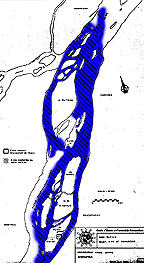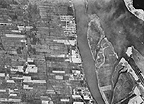Accounts
Coring
Position
Second Vessel?
Sonar
Glossary
Back to "The Dive"
Homepage



Locating the Site of the P.S. Lady Sherbrooke



Where is the resting place of the P.S. Lady Sherbrooke and the site of the dive? How did the CHASQ locate the site? The answers to these questions begins long before the team began its work with historical accounts of the site beginning in the 1960s.History tells us that in December 1826 the former steamer was towed to the group of islands not far from Montréal, known as Iles de Boucherville. One of these islands was then owned by the Molson family. The family had their summer residence on Ile Sainte-Marguerite. In fact John Molson died on that island, close to the site of the excavation.


The waters surrounding the island were used by the Molsons as a dockyard for their fleet. The north channel, today known as the Grande Rivière was used between sailing seasons as a place to winter the boats. The south channel (today Molson Channel ) became something of a mini shipyard. A small slip was built to drag the boat out of water for small repairs and general up keeping. This slip is located under a present day parking lot leading to the site.
With this knowledge the CHASQ initiated its physical research of the site in 1983. A sonar of a large area surrounding the area believed to hold the treasures revealed anomalies that could lead to the discovery of one of the Molson Lines' steamers. In addition to the Lady Sherbrooke it is believed that additional ships from the line rest nearby.
Aerial images and road maps showing the actual site reveal that when you are on the islands you are only minutes from the City of Montréal. It is hard to believe that a site so close to a major center laid (and still continues to be) undiscovered by so many Canadians. The Lafontaine Tunnel which transports literally millions motorists every year is on Ile Charron, just opposite Ile Sainte-Marguerite. While the team was excavating the wreck the sounds of traffic acted as a continuous reminder of the fact that history had literally passed by this essential element of Canada's history.

